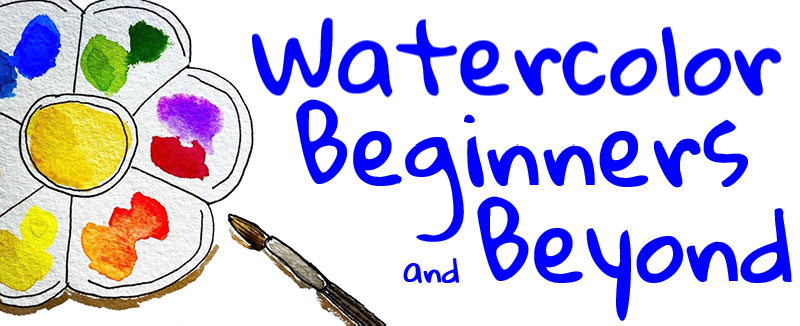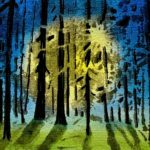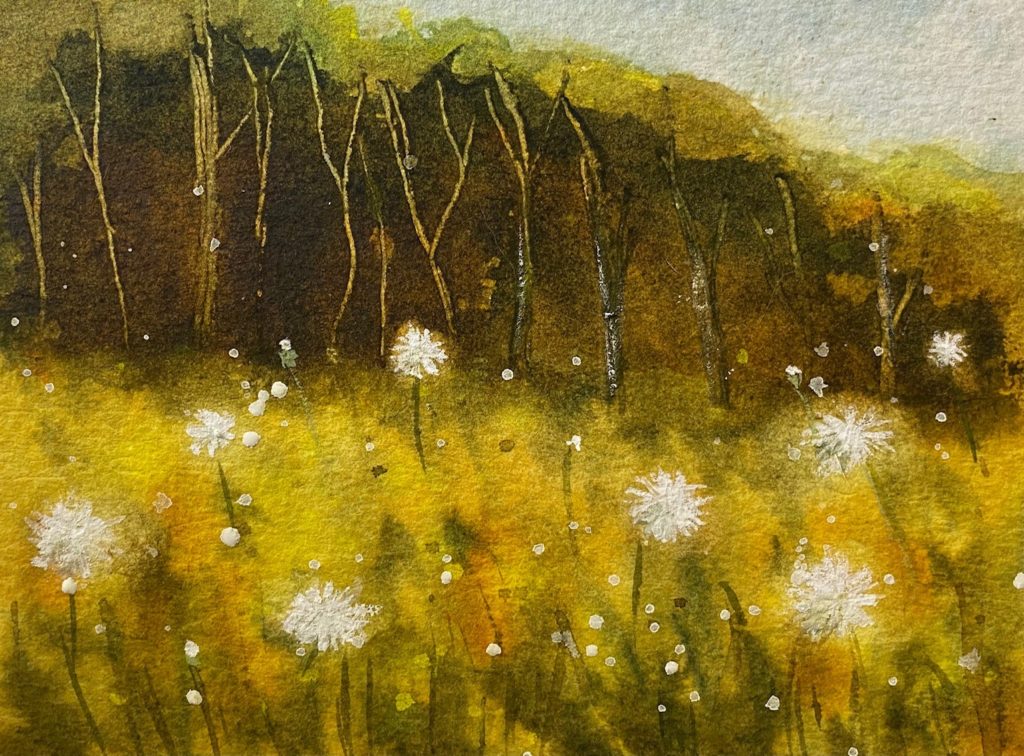
Creating shapes using masking fluid
Apply masking fluid to unpainted paper to create finely-detailed shapes. Masking fluid (also known as liquid frisket), allows you to cover areas that you do not want to paint. Because the frisket is somewhat thicker and easier to apply than the watercolor paint, it can be shaped into detailed designs that would be difficult to…
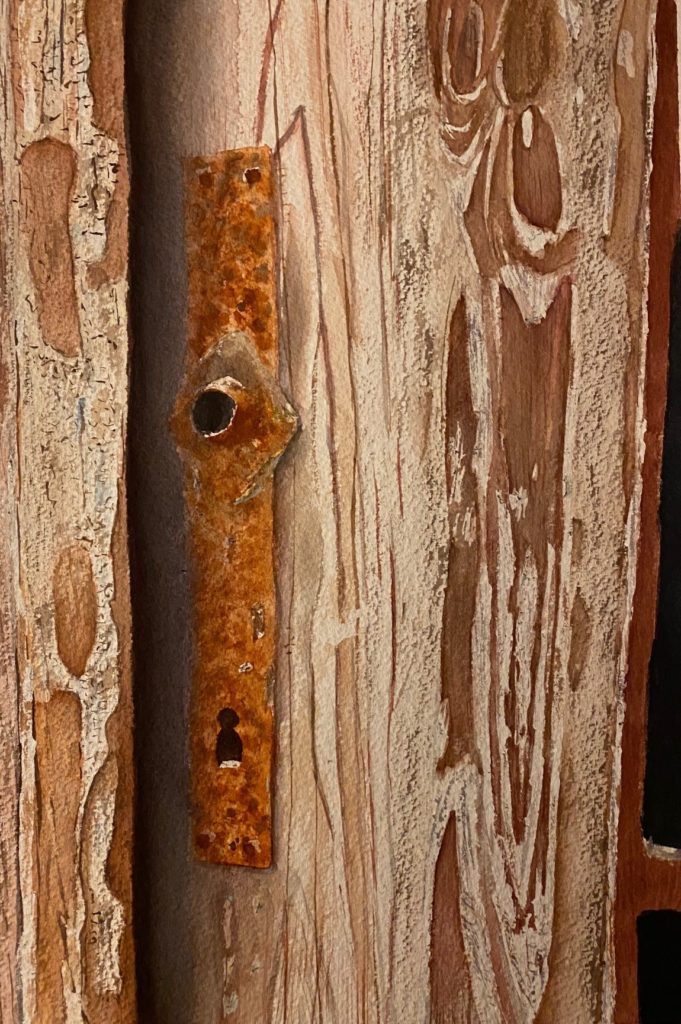
Creating texture using a dry brush
Use the flat side of a dry brush to create rough textures. Rough wood or bark, stones, lichen, altocumulus clouds, or disturbed water surfaces can be created by drawing the flat side of a dry brush across the paper. The painting must be on textured paper; the technique doesn’t work with smooth, hot-pressed paper. And…
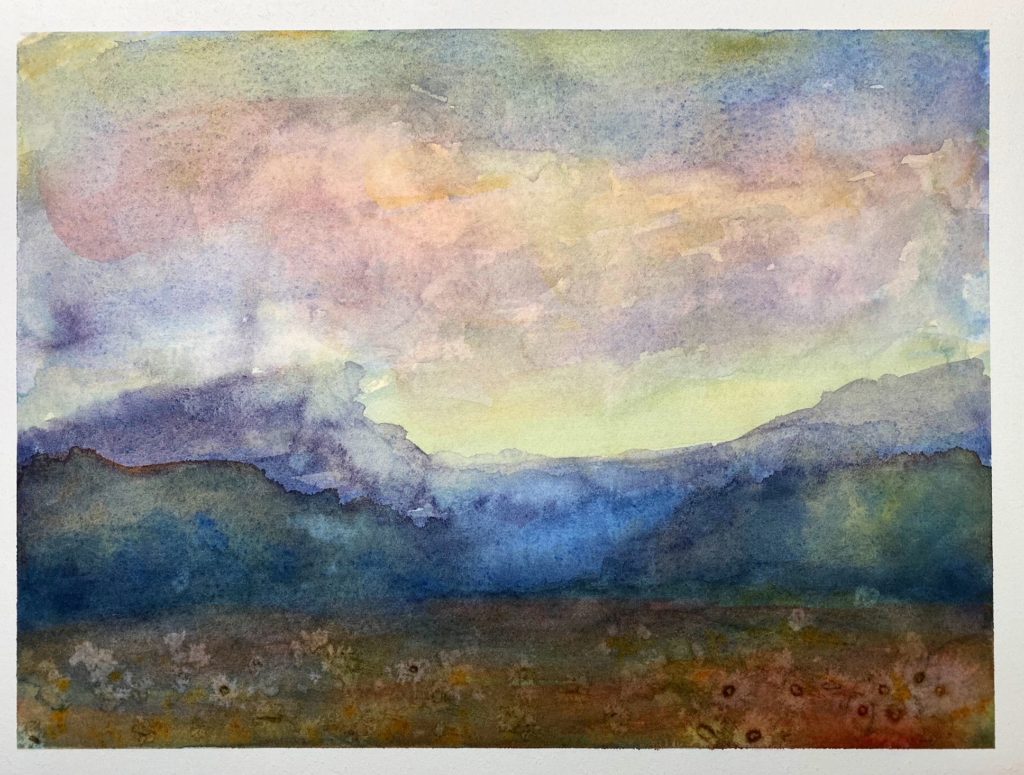
Using salt to create texture
Sprinkling salt on a painting can create interesting effects. While the painting is wet, sprinkle salt across the paper — or in specific locations — to create interesting and natural-appearing effects and variations. The salt crystals absorb the water and paint, resulting in areas with less pigment. Allow the painting to dry completely, then brush…
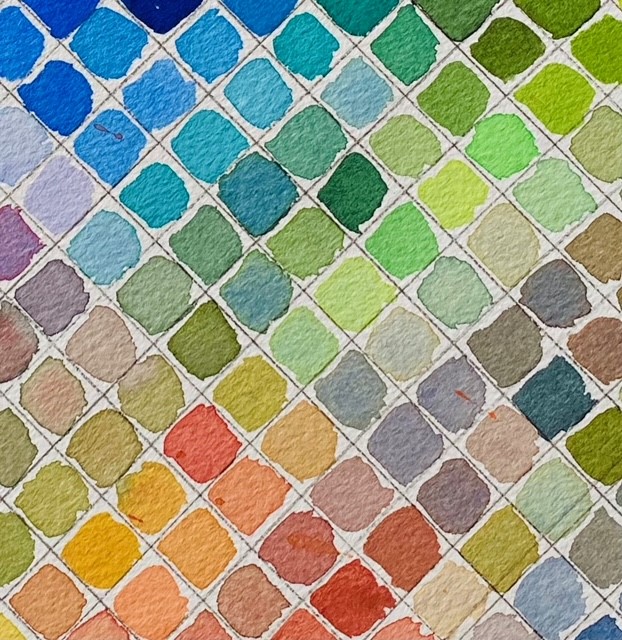
How do I match a color that I see in a photo?
Have you ever tried to mix a color from a reference photo and did not have any idea what colors to combine? Try the Golden Paints color mixer tool. It is designed for acrylic, but pigment is pigment. It works well for watercolor. The tool is easy to use: 1) Import a photo 2) Move…
- « Previous
- 1
- 2
